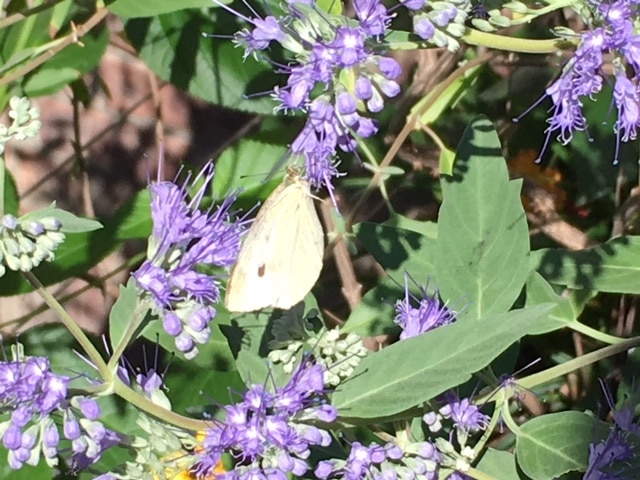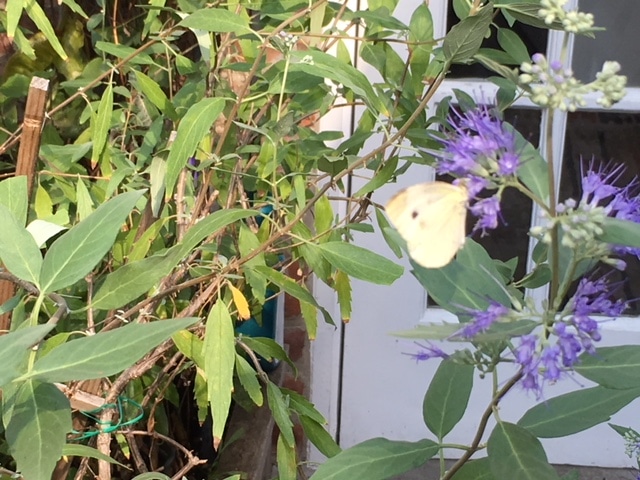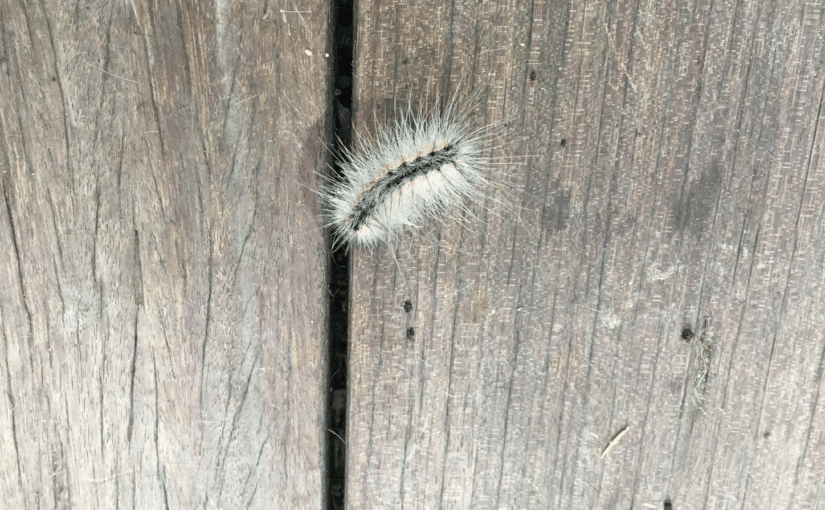by Barbara Nevins Taylor
Mystery caterpillars began to appear on our fourth floor deck in Greenwich Village in the early fall. We hadn’t seen caterpillars or their webs all summer, but suddenly during the second week of September I spotted the first one crawling seemingly to nowhere. I put an end to it with a steady stream of water from the hose, and thought no more about it.

But then, my husband Nick said that he had seen two in our living room.
On the theory that if something happens to one person, it must be happening to others, I reached out to the New York City Parks Department and the New York Botanical Garden. At that point neither of us had taken a photo. Once we realized our mistake, we took photos and video.
But when I talked to the experts, I could only describe what we saw. We told Don Gabel, Director of Plant Health at the New York Botanical Garden (NYBG) that we didn’t see a nest or web. “The caterpillars are there because they are probably on the way to somewhere else. It’s likely they were carried to the Village and your deck by wind currents,” he said.
Based on what I described, Gabel said he thought it was a Tusket Moth, also called a Tussock Moth. He said, “They are plentiful this year and windblown in their younger stages and it’s not unusual that they would end up on a balcony.
A few days later, we spotted another in the house, and had the wit to take a photo.
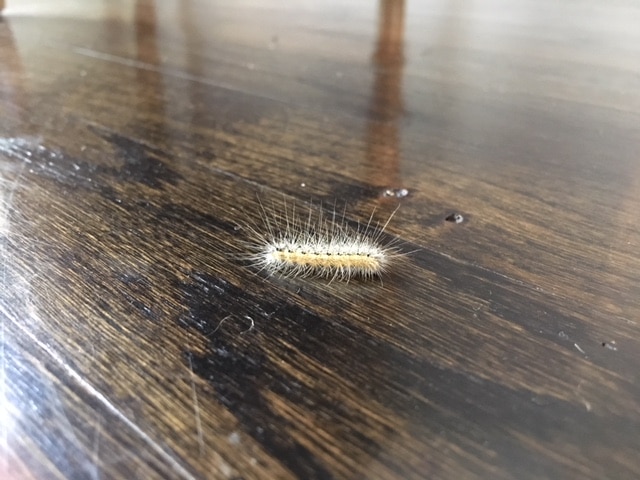
I sent it to Brien Mosley at the New York City Parks Department. Mosley, like the NYBG’s Gabel, said he thought it was a White Hickory Tussock Moth caterpillar. “You want to avoid touching them. They are venomous but not deadly. They secrete toxins through the hairs and it can cause a bad rash or affect vision if the eyes are rubbed after,” he told us.
When my husband Nick noticed one on a table in the downstairs tenant’s garden, he shot a video.
I sent that to Mosley at Parks. He said, based on the video our mystery caterpillar could be a Brown-tail Moth Caterpillar. “It also has the stinging hairs and can cause skin reactions. They are not aggressive, they just secret the toxin as a defense so it’s best to avoid touching both with bare skin,” he said.
Okay. But we didn’t know where these mystery caterpillars nested. And then, I saw where they lodged.
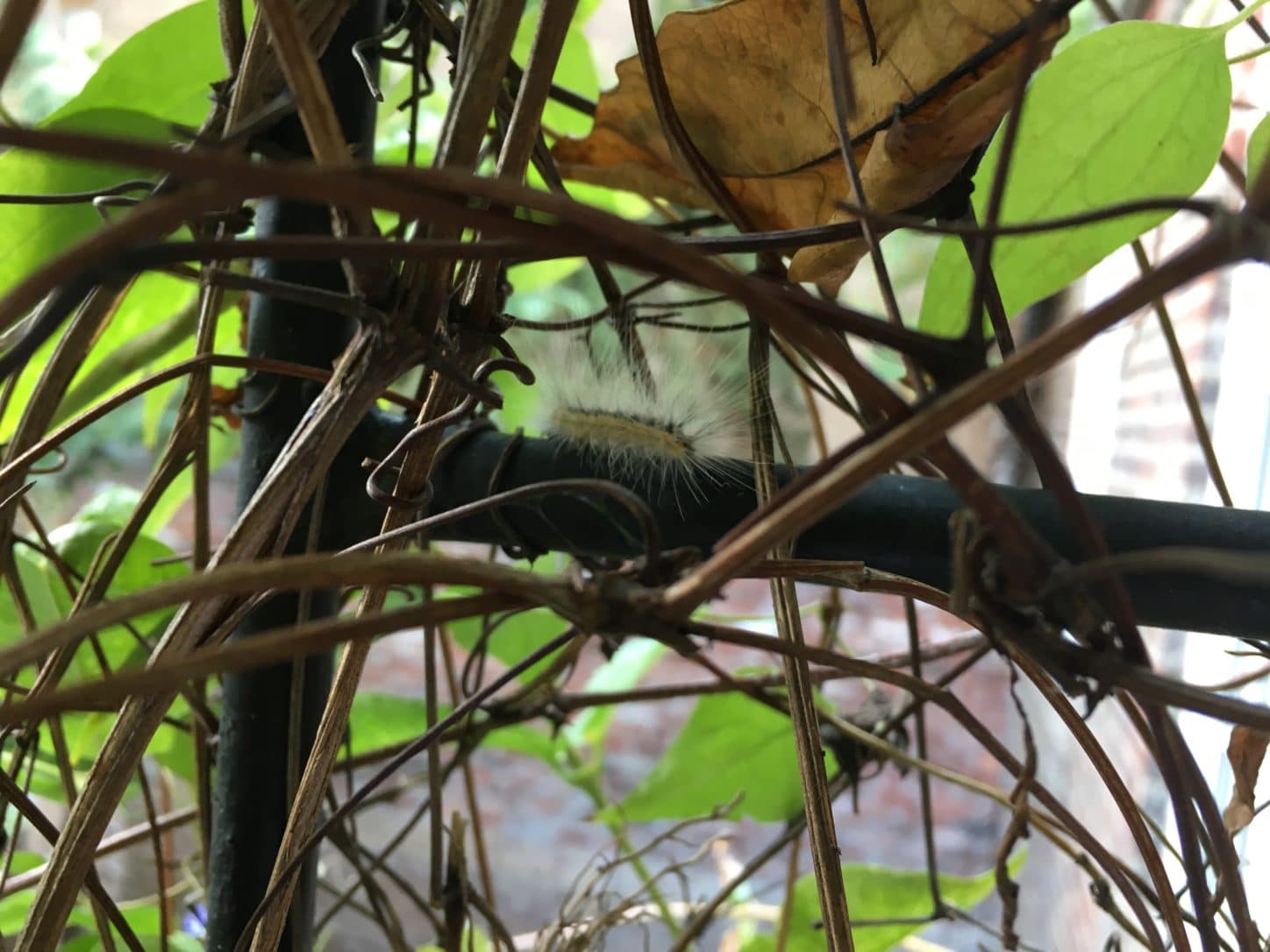
They tucked themselves into the climatis on the trellis over our kitchen door and the mandevilla
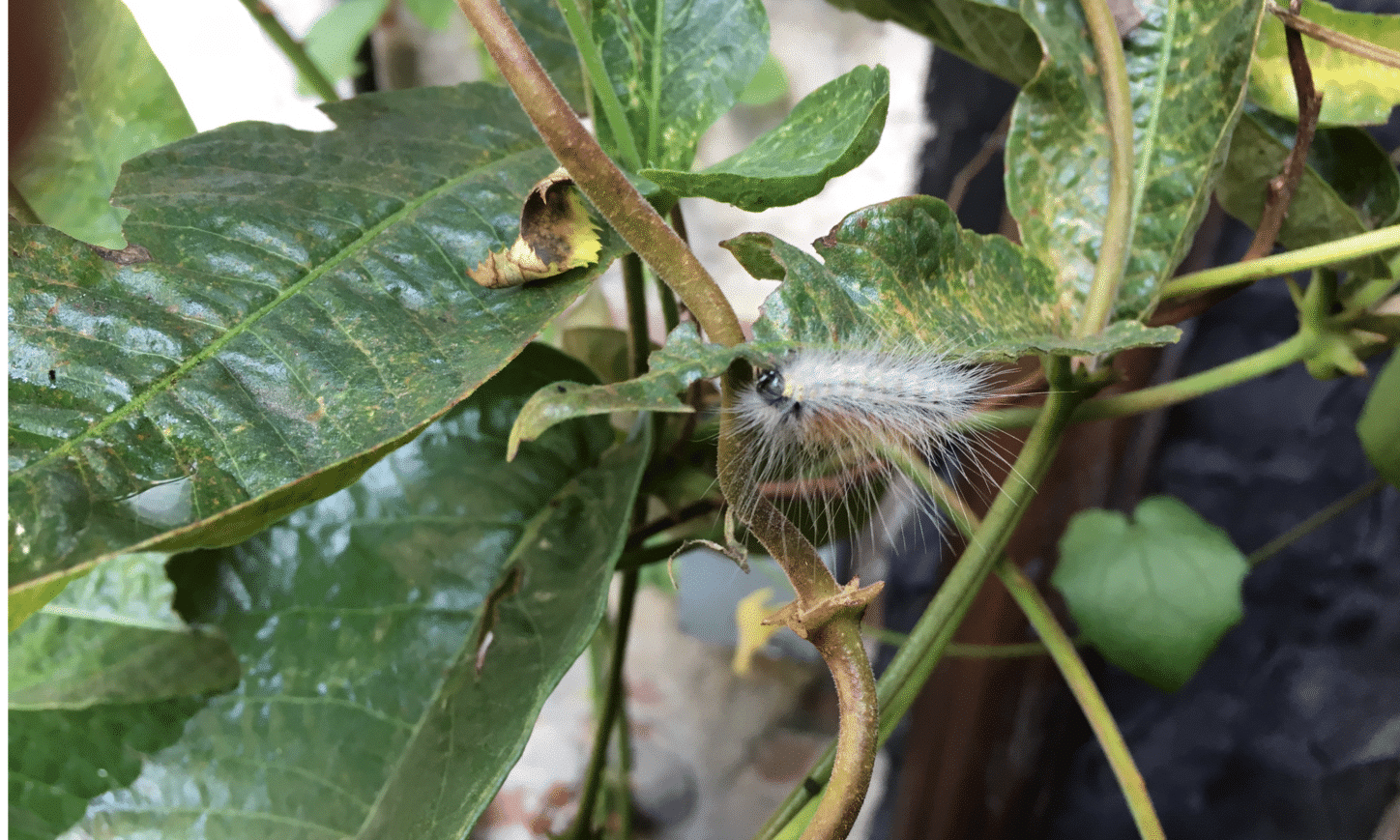
that climbs and blooms with beautiful pink flowers.

They like to eat the leaves and make nasty holes.
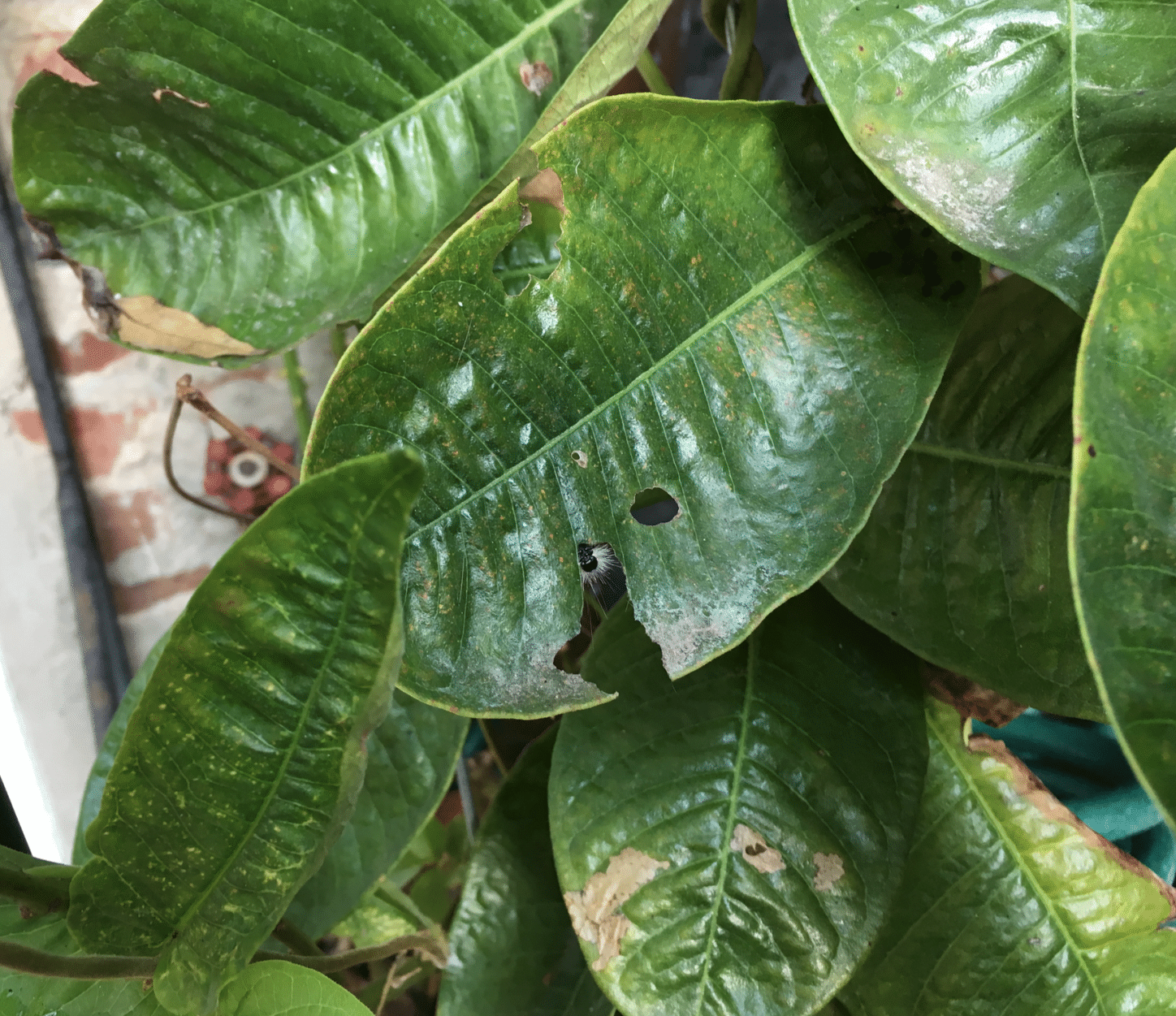
Gabel at the Botanical Garden suggested we get the Azerdirachtin to spray. BioNeem also contains Azerdirachtin and when we discovered none of our local hardware or plant stores had it, we went to Amazon.
The spray works and we hope to be rid of the caterpillars soon. But we wondered about what comes next when we saw the little white moth.
